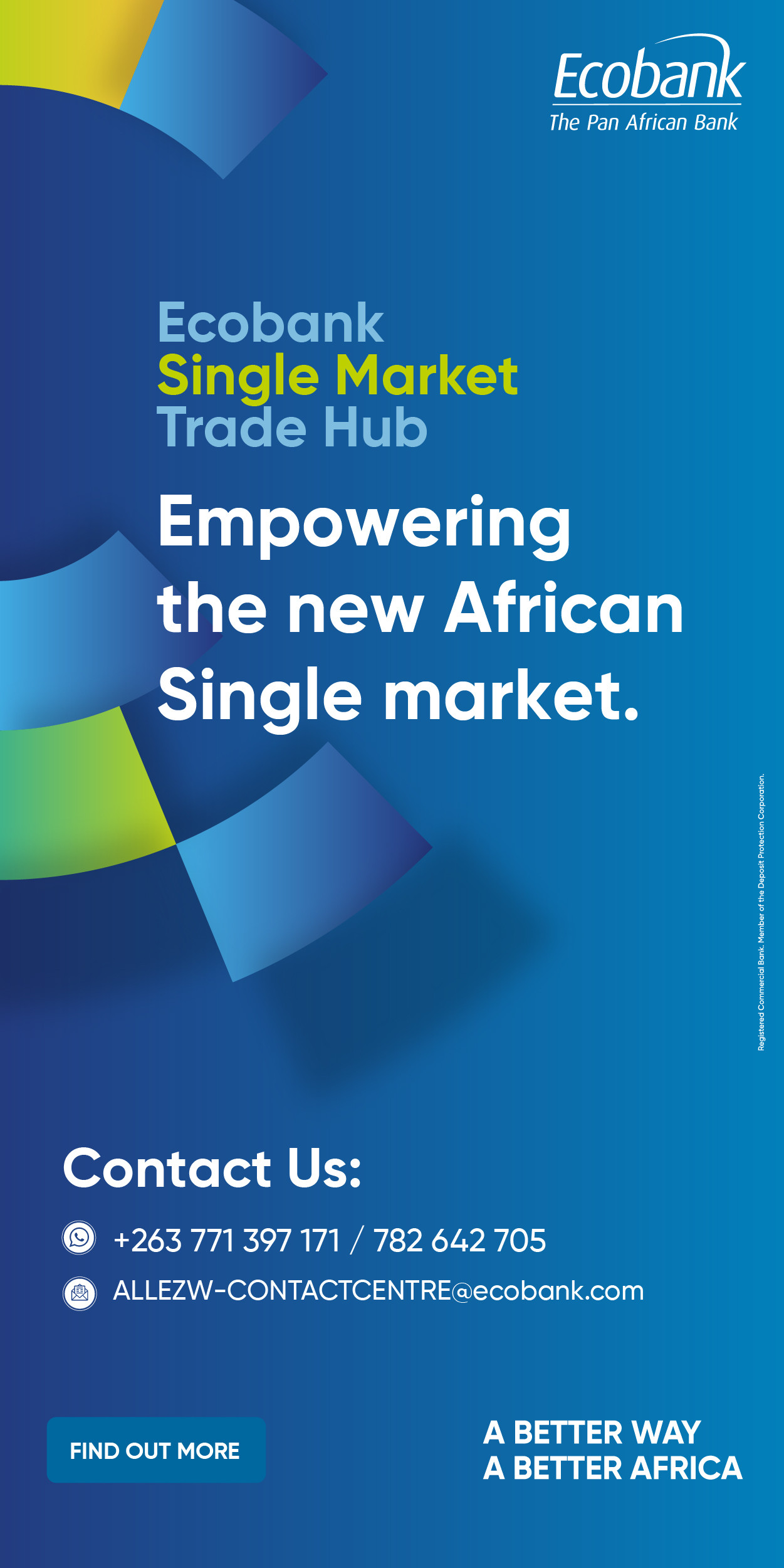- Nampak Zimbabwe faced significant challenges in Q3 2025, with a 12% year-to-date revenue decline driven by heightened competition
- The company’s profitability plummeted by 28% in the first half of the year, largely due to reduced sales volumes and margin erosion
- Nampak anticipates a potential recovery in the final quarter, fuelled by festive season demand
Harare- Nampak Zimbabwe Limited, the country’s largest packaging firm, reported a challenging third quarter ending 30 June 2025, driven by heightened competition amid growth in informalization and persistent power outages.
Despite these setbacks, the company remains optimistic about a recovery in the final quarter, anticipating a boost from increased demand during the festive season.
In a trading update, the group noted that, “competition across all its operations has pressured gross margins, particularly in certain product categories.
“The growing informalisation of the economy is expected to further strain margins due to higher compliance costs for formal businesses and inconsistent application of route-to-market regulations.”
To counter these challenges, Nampak is reengineering its product offerings to align with international packaging trends, aiming to preserve profitability.
Group volumes for the third quarter were 3% lower than the previous year, primarily due to weaker demand and increased competitor activity in PET/preforms and commercial cartons.
Metal volumes also saw a significant decline compared to the prior year, attributed to reduced demand and product rationalisation efforts to align with market needs and improve efficiencies.
However, the company expects volumes across its business units to rebound in the final quarter, driven by stronger seasonal demand in the beverages sector and increased agricultural output.
For the nine months to June 2025, group volumes were 13% below the prior period, though recoveries in the current quarter partially offset earlier losses. Group revenue for the same period fell by 12%, largely due to volume declines in the plastics segment and commercial cartons, compounded by self-manufacture trends and lower tobacco carryover volumes from the FY24 season, impacted by El Niño effects.
Analysis
The financial performance of Nampak for the third quarter and nine months ending 30 June 2025 reveals a company grappling with significant economic and operational challenges that have materially impacted its financial health. A granular analysis of the reported data highlights the interplay of revenue declines, margin compression, cost pressures, and sectoral disparities, with implications for the company’s short-term stability and long-term strategic positioning.
The 12% year-to-date revenue decline for the nine months to June 2025, coupled with a 13% drop in group volumes, underscores a significant erosion of Nampak’s top-line performance. The plastics segment and commercial cartons bore the brunt of this decline, driven by increased competition and customer shifts toward self-manufacture, which reduced demand for Nampak’s products.
The third quarter saw a more moderate 3% volume decline, primarily in PET/preforms, commercial cartons, and metal products, reflecting targeted competitive pressures and market-driven product rationalisation.
Lower tobacco carryover volumes from the FY24 season, impacted by El Niño, further exacerbated the revenue shortfall. This consistent volume contraction signals a weakened market position, reducing revenue streams and limiting cash flow generation. The absence of significant exchange gains, which buoyed prior-year results, amplified the revenue impact, as currency-related benefits could not offset the volume-driven losses.
Nampak’s profitability took a substantial hit, with a 28% profit decline in the first half of the year, driven by a 20% reduction in sales volumes and significant margin erosion. Trading income for the nine months fell by 28% to US$3.78 million from US$5.28 million, reflecting both lower volumes and the lack of one-off exchange gains from the prior year.
The increased competition across all operations has compressed gross margins, particularly in high-volume categories like PET/preforms and commercial cartons, where pricing power has diminished.
The growing informalisation of the economy has further strained margins by imposing higher compliance costs on formal businesses like Nampak, while inconsistent route-to-market regulations have disrupted sales channels. These factors collectively indicate a structural challenge to profitability, as the company struggles to maintain pricing discipline in a competitive and fragmented market. The 28% drop in trading income suggests that cost structures have not been sufficiently adjusted to absorb the revenue decline, exposing inefficiencies in the operating model.
Operational challenges, particularly in the plastics and metal segment at Mega Pak, have compounded financial pressures. Third-quarter sales volumes at Mega Pak fell by 14%, driven by increased competitor activity and frequent plant breakdowns due to severe power outages in Ruwa. The reliance on generators to mitigate these disruptions has significantly increased operating costs, further eroding margins in an already strained segment. This cost escalation highlights a critical vulnerability in Nampak’s cost structure, as higher energy expenses reduce competitiveness, particularly in price-sensitive markets.
Management’s efforts to explore cheaper power supply alternatives are noted, but the absence of immediate solutions suggests ongoing cost pressures that will continue to weigh on profitability. The broader economic context of power unreliability in Zimbabwe exacerbates these challenges, forcing Nampak to operate at suboptimal efficiency and limiting its ability to meet customer demand consistently.
Sectoral Performance Disparities
A sectoral analysis reveals significant variation in financial outcomes across Nampak’s business units, reflecting diverse market dynamics. The Hunyani Corrugated Division maintained stable sales volumes in the third quarter, but a marginal decline in tobacco sector volumes due to a slow season start limited revenue growth.
This stability, however, is overshadowed by the strong performance of the Cartons, Labels and Sacks Division, which reported a 34% increase in third-quarter sales volumes, driven by robust demand for tobacco paper wrap and a 17% rise in commercial packaging volumes. This growth provided a critical revenue buffer, partially offsetting losses in other segments.
At CarnaudMetalbox, an 8% increase in third-quarter sales volumes was driven by a 47% surge in HDPE volumes, reflecting strong market demand. However, significant declines in metal volumes due to product rationalisation and raw material delays tempered the financial upside, as lower volumes in this high-margin segment constrained revenue potential.
These disparities highlight Nampak’s uneven exposure to market trends, with growth in specific niches unable to fully compensate for broader weaknesses.
Forward-Looking Financial Implications
Nampak’s outlook for the final quarter hinges on anticipated volume recoveries, particularly in the Paper operation, driven by a record-breaking tobacco marketing season. Increased demand in the beverages sector and higher agricultural output are expected to bolster volumes, potentially reversing some revenue declines.
The Plastics and Metals operations may also benefit from reduced pricing distortions due to a stable exchange rate, which could improve competitiveness and margins.
However, the financial impact of these recoveries is uncertain, as they depend on Nampak’s ability to manage elevated operating costs, particularly energy-related expenses, and navigate competitive pressures.
The ongoing cautionary notice regarding the sale and purchase agreement with TSL Limited introduces additional uncertainty, as the transaction’s suspensive conditions could delay or alter strategic financial planning.
Failure to meet these conditions could limit access to capital or restructuring opportunities, further constraining Nampak’s ability to address its financial challenges.
Therefore, Nampak Zimbabwe Limited’s financial performance for the third quarter and nine months to June 2025 reflects a confluence of external and internal pressures, resulting in a 12% revenue decline, a 28% profit drop, and significant margin erosion. Competitive pressures, volume losses, and operational inefficiencies, particularly due to power outages, have strained the company’s financial position. While sectoral bright spots, such as the Cartons, Labels and Sacks Division, provide some relief, the overall financial impact reflects vulnerabilities in Nampak’s operating model and market positioning. The anticipated final-quarter recovery offers potential for improvement, but its success will depend on cost discipline, operational resilience, and favourable market conditions. The pending TSL transaction adds a layer of strategic uncertainty, making proactive management of costs and competitive dynamics critical to stabilizing Nampak’s financial trajectory.
Equity Axis News





